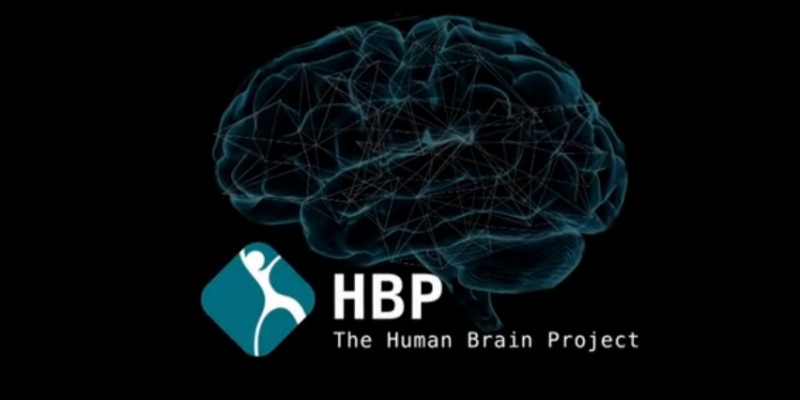“It’s crap.”
That was the candid response of one eminent scientist towards Henry Markram’s Human Brain Project (HBP) at a meeting of the Swiss Academy of Sciences last January. The meeting was ostensibly reviewing the progress of high-performance computing in the neurosciences. For Markram, it felt like the inquisition.
But on Monday it seemed like Markram’s controversial approach to modeling the brain was vindicated when the HBP received one of two awards from the European Commission’s Future and Emerging Technologies (ECFET) flagship competition to the tune of a brain-boggling $670 million, payable over the next 10 years. With matching from the winners themselves, that sum will double. Markram wants to build a supercomputer simulation using IBM’s Blue Gene system at the HBP’s base, the École Polytechnique Fédérale de Lausanne, that pulls everything known about the human brain together, from the molecular level all the way up to philosophical issues like free will and decision-making. Critics of Markram claim that his approach is too complicated. Markram counters that even at this early stage, discoveries have been made that wouldn’t have been possible without the HBP’s scale-spanning models.
HBP-videoverview from Human Brain Project on Vimeo.
The award will help the HBP focus on three main areas. There’s the job of building a model of the mouse brain, followed by doing the same for the human brain. Then, there’s the attempt to examine the associations between how the connections in the brain are arranged and how different brain-related physical and psychiatric diseases manifest. Markram hopes this will all lead to better diagnostic tools and treatments in neurology and technological spin-offs, like an Apollo project of the cranium.
The other award from the ECFET went to Andre Geim and Kostya Novoselov at the University of Manchester for research into the properties of graphene, a form of carbon that resembles graphite, except that graphene is only one atom thick. Graphene has been described as molecular-scale sheets of chicken wire. The substance is electrically conductive, transparent, flexible, and incredibly strong: a one-molecule thick sheet of graphene is 100 times stronger than a one-molecule thick sheet of steel. Graphene’s other properties make it well-suited for a variety of electronic, thermal, and other material science applications.
Research into graphene only goes back to 2004, when Geim, Novoselov, and colleagues in Russia first isolated it by ripping flakes off of a lump of graphite using sticky tape. From such a recent low-tech start, graphene research has already reached heady heights: Geim and Novoselov earned the 2010 Nobel Prize in Physics and were knighted in the 2012 New Year Honors List in the UK (they are both British citizens, so they can call themselves Sir Andre and Sir Kostya. Sir Andre is also well-known for levitating a frog.)
Inevitably, such a meteoric rise also brings criticism that graphene may be an overhyped material. There are cheaper alternatives that are easier to work with. Nevertheless, the $670 million should help to address those issues. That’s if graphene ever arrives. Both projects have to hit certain targets if they are to receive the full monetary amounts. Even if they hit the targets, there’s some doubt they’ll ever see the rest.
The first allocation of the award money will be about $150 million each as part of the Seventh Framework Program, the current system for funding scientific research in the EU. Since their inception in the mid 80s, the Framework programs have run for four or five years until the Seventh, when they started to run for seven. However, its successor, Framework Program Eight (now called Horizon 2020, after the date that it ends) is in funding trouble even before it starts next year, because of the EU-wide economic crisis. An allocated budget for Horizon 202 is close to $110 billion, and there’s a growing argument in the EU, as there is in the U.S., that research has to suffer its share of cuts. The scale of the EU Framework Programs is huge: from its start in 1984 to the end of the Horizon 2020 program, the Framework Programs will have paid out a staggering $250 billion in research funding, with more than two fifths of that from Horizon 2020 alone.
These two flagship awards are among some of the largest payments to individual research projects in history. Some critics question the wisdom of putting such large eggs in relative small baskets and believe that funds will be diverted from smaller, but possibly more deserving, research groups to cover the award payments.
Whatever the outcome for Markram, Geim, Novoselov, there is general agreement that just taking part in the competition has been useful for many of the competitors. For example, one of the unsuccessful projects aimed to build a sociological model of human behavior and its impact on politics, the environment, and economics. While he was unhappy not to win, the project’s leader says that the process of getting organized to compete for an award has created a vibrant interdisciplinary community that will probably allow the project’s ambitions to be realized outside of the Framework Program.


Comments are closed.